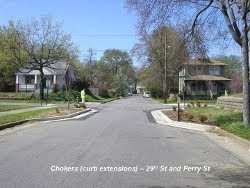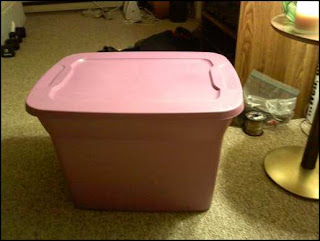Over the course of the fall semester, V515 Sustainable Communities intensified and extended my perception of sustainability. The links between environmental consciousness, economic equity, and social justice have been bolded and are very real. Going into the class I already had a personal interest in sustainability, especially behavior change and its social attributes, though V515 taught me some of the science behind the theory and actions. My perception of sustainability is know reinforced with some hard science and philosophy from many authors, including my fellow classmates.
Personal tests and reflections such as the Ecological Footprint Calculator intensified my sustainable responsibility. For instance, the calculator pointed out that much of the emissions caused by my lifestyle are due to food packaging and the transportation of it. The notion that it would take on average three and a half Earths to match American lifestyles with those of the rest of the world. The course has been a call to slow down and reevaluate my actions and personal lifestyle. I have always strived to become a more sustainable actor, but this class has been a catalyst. My diet, for instance, has been one of fish and non-meats (mainly vegetables and fruits) for almost three-years. I am known as a pescatarian. After taking this course, I understand that my diet has a much larger effect than I thought on the world. Whether it be the case of overfishing, food transportation, or the externalities of packaging, I now want to move more towards a diet that does not come in a box or a plastic bag and one that harms no person or animal. Although this transition will be difficult, it is a beacon for making good consumer choices.
The readings and class discussions make you truly consider what is sustainability. It is an all-encompassing concept that is difficult to define. Sustainability defines so many aspects of myself. I make daily choices based on the concept. My political and economic preferences are shaped by sustainability to an extent. Before I buy something, I think about its packaging and its supply chain. If I think the costs outweigh the benefits, and evaluate if I really need it, I am usually deterred from buying it. Along the same lines, I have always tried to revel in a simple living lifestyle; one where I appreciate the small pleasures of life and reduce my material wants to the lowest common denominator. The connection between the economic underlying of most things in our modern society and the concept of sustainability are very apparent after completing the course. In general, economics is more than a way for society to function, but rather a signal. Therefore, the term buycott (i.e., voting with your dollar) means much more to me than it did at the beginning of the semester. Whether it was the Ted Talks or the Wheeler readings, I will now strive to put this concept before any impulse to consume.
In addition to simple living, my other main interest that is a huge part of sustainability is community development. I approached this class wanting to find ways to bring people closer together through the unified goal of sustainability. The Roseland readings stocked my knowledge with tools such as regulation, financial incentives, voluntary action, and public expenditure. Whether the weekly topic was transportation, waste reduction, or land-use, I discovered tools to accomplish these topics in a sustainable manner through connecting members of the community. This level of human interaction and cooperation was illustrated in many real-life examples, which is a takeaway that I will always value. I looked to this course throughout the semester for ideas on how to combine my passion for community and people with that of sustainability. The readings and class discussions provided me with many ideas of how I can strive for a sustainable tomorrow through my future career and personal life. The ideas outlined in the readings also supplemented my understanding that all things are connected—especially in a community setting. Green roofs, for example, is a concept that I was generally unfamiliar with before this course, but now understand how it is a concept that comprises so much. I now know that economic development can result because there is a market for green roofs, it is a way to make communities stronger through the formation of public and private partnerships, and it is a way to re-localize efforts to combat large problems such as climate change. Green roofs also highlighted Roseland’s point that described environmental protection policies as very small solutions to a much larger problem. Sustainability is more than nature conservation, it is about nature integration, in which conservation becomes intuitive. Naturally, sustainability is more than carrying a Nature Conservancy totebag…but still respectable (that is my tote bag below by the way!).
My interest in the enveloping concept that is sustainability has expanded greatly because of V515 Sustainable Communities. Everyday in addition to scouring the news about the usual politics and global events, I check out Grist and try to make connections between class concepts and what is happening in sustainable communities and the market place throughout the world. The New Consumer also provides great food-for-thought. Out-of-class experiences gave me desire to pursue more community events. I often find some events such as lectures and public meetings intimidating because I usually attend them alone and everyone else there seems like an expert on the given topic. My outside experiences, specifically the Solar Power Outreach lecture in Indianapolis, gave me more confidence and willpower to attend such events. These events not only give you new knowledge about a sustainable topic, but they help you practice becoming a more civic member of society and connect you to others with similar interests.
The personal project portion of the class gave me a special opportunity to try a sustainable practice that I always wanted to try. It also gave me a chance to examine and experience the sustainable practices of my classmates. Although I do not own a pet or have kids (yet?), I got a lot of joy from reading about those topics and others. I enjoyed reading about projects that had similar themes to my own such as diet and waste reduction. There were others that I thought were simply awesome such as bee keeping and a carless semester. Although I did not get to read every blog entry by each of my classmates, I tried to view as many as possible. The good thing is that these blogs will not go away so I can always revisit them for new ideas. In the same vein, that is how I feel about this entire class. I would have loved to have taken this class and only this class so I could reap as many benefits from it as possible. Fortunately, I will always have my textbooks and my experiences to keep pushing forward and further investigate those things that I did not get to fully absorb. I am genuinely excited to see what becomes of my new outlook on sustainability and how it shapes the decisions I make in the future. Thank you for the opportunity, V515 Sustainable Communities.
Here’s to you.



































